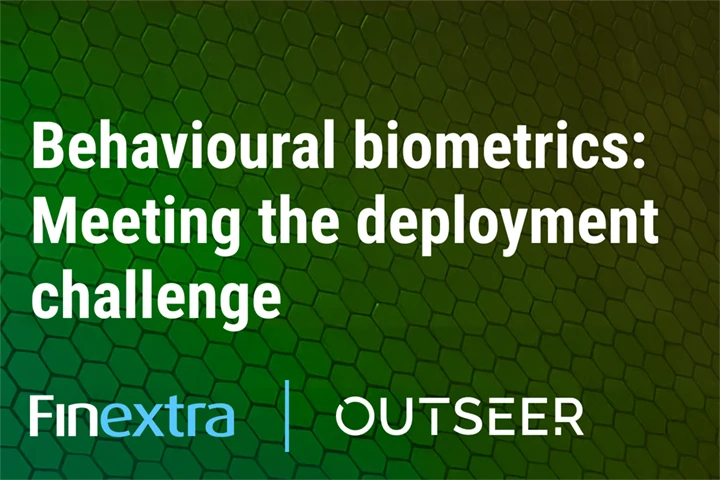With the increasing number of cyber-attacks, the banking industry and its supply chain has become a prime target for attackers due to the valuable financial information they possess. The entire financial sector is considered a high-value target for hackers who seek to gain access to sensitive information or disrupt their operations. In this article, we will explore the lessons learned from defending a critical software service provider to the biggest banks and financial environments and the highest threat environments on the planet.
The Need for Defending Banking Software
In today’s digital age, banks heavily rely on 3rd party software and technology service providers to provide financial services to their customers. However, this reliance on technology also exposes banks to cybersecurity risks. Cybercriminals are constantly looking for vulnerabilities in banking software to steal financial data or conduct fraudulent activities. Therefore, it is essential to ensure that banking software is adequately protected to prevent such attacks.
10 Lessons Learned from Defending Banking Software
1. Develop and Adopt a Zero Trust Strategy
Zero trust is a security framework that assumes that all network traffic, both internal and external is potentially malicious. A zero-trust strategy will help service provider and banks to protect their assets and data from potential cyber threats. By implementing a least privilege access policy, multi-factor authentication, micro-segmentation, and monitoring and logging all network activity, companies can enhance their security posture and reduce the risk of a security breach.
2. Implementing Strong Authentication Mechanisms
One of the most important lessons learned from defending banking software is the need to implement strong authentication mechanisms. Banks should require customers to use strong passwords and two-factor authentication methods such as biometric verification or SMS-based authentication. This will help prevent unauthorized access to bank accounts and financial data.
3. Continuous Monitoring and Vulnerability Assessment
Continuous monitoring and vulnerability assessment of banking software is crucial to identify and mitigate potential security threats. Banks should conduct regular penetration testing to identify any vulnerabilities in their software and implement necessary security measures to fix them. This will help prevent cyber-attacks and ensure that banking software is adequately protected.
4. Develop a Strong Application Security
API and application security are critical components of safeguarding all applications and software against potential security threats. APIs serve as the primary means by which different applications and systems interact with the service or the application, making them a prime target for potential attackers. Secure API and application security measures can include secure coding practices (SDLC), data encryption, strong authentication and access controls, strong DDoS protection, protection against application attacks and regular security testing and vulnerability assessments. It is also essential to have clear policies and protocols in place for managing API access, monitoring activity, and responding to security incidents. Service providers must also ensure that third-party applications and services that use their APIs comply with strict security protocols and adhere to industry standards. With effective API and application security measures in place, service providers can protect sensitive customer data, maintain the integrity of their applications, and minimize the risk of security incidents.
5. Investing in Cybersecurity Solutions
Investing in cybersecurity solutions is essential to protect banking software and service environments from cyber-attacks. Banks should deploy advanced security solutions such as firewalls, intrusion detection systems, and security information and event management (SIEM) solutions. These solutions will help detect and prevent unauthorized access to banking software and mitigate potential security threats.
6. Data Protection as a lifestyle
Data protection is a critical concern in the entire financial sector, as they handle vast amounts of sensitive personal and financial information on a daily basis. Service providers and well as banks must implement robust data protection policies and procedures, including encryption, access controls, and regular security audits, to safeguard customer data. Additionally, service providers must train their employees on data protection best practices and ensure that all third-party vendors and partners also comply with data protection regulations. Failure to adequately protect customer data can result in severe legal and reputational consequences, including financial penalties, loss of trust, and damage to the company brand image. Therefore, data protection is an essential aspect of banking operations that must be taken seriously to protect both customers, service providers and the bank itself.
7. Endpoint Detection and Response and Incident Response Automation
Endpoint Detection and Response (EDR) and incident response automation are crucial tools for all organizations to quickly detect and respond to security incidents. EDR solutions monitor endpoints such as servers, personal computers, and mobile devices, detecting suspicious activity and alerting security teams to potential threats. Incident response automation streamlines the response process by automating repetitive tasks, such as collecting and analyzing data, and initiating incident response workflows. With automation, security teams can quickly investigate and respond to security incidents, minimizing the risk of data loss and business disruption. Organizations can also use automation to improve incident response planning by running simulations and identifying potential weaknesses in their response strategies. By combining EDR with incident response automation, organizations can detect and respond to security incidents more quickly and effectively, reducing the impact of attacks and mitigating the risk of future incidents.
8. Educating Employees and Customers
Educating employees and customers is crucial to prevent cyber-attacks on banking software. Banks should provide regular cybersecurity training to their employees to ensure that they are aware of the latest security threats and best practices to prevent them. Additionally, banks should educate their customers on safe online banking practices, such as not sharing their login credentials with anyone.
9. Cybersecurity Compliance as the Minimum Standard
Cybersecurity compliance is a critical aspect of banking operations, as financial institutions face a constant threat of cyber-attacks. Banks and service providers that process financial data are required to comply with various regulations and standards to ensure the security and privacy of customer data and prevent financial fraud. Compliance frameworks such as the Payment Card Industry Data Security Standard (PCI DSS and PCI 3DS), A SOC 2 Type 2 is an internal controls report capturing how the service providers safeguards customer data and how well those controls are operating, and the General Data Protection Regulation (GDPR) provide guidelines for banks to establish robust cybersecurity policies and procedures. Compliance involves implementing a range of technical and organizational measures, including network security, data encryption, access controls, employee training, and incident response planning, to mitigate cyber risks and ensure the confidentiality, integrity, and availability of financial information.
10. Collaborating with Industry Peers
Collaborating with industry peers is essential to sharing knowledge and best practices for defending banking software. Service Providers should collaborate with other financial institutions in their eco-system to share threat intelligence and collaborate on cybersecurity solutions. This will help improve the overall security posture of the financial industry and prevent cyber-attacks.
In conclusion, defending banking software is crucial to prevent cyber-attacks and ensure that financial data is adequately protected. Service providers must implement strong authentication mechanisms, conduct regular vulnerability assessments, invest in cybersecurity solutions, educate employees and customers, and collaborate with industry peers to defend against cyber-attacks. By following these best practices, service providers can effectively defend their software against the highest threat environments on the planet.
Defending Software that Defends Banks: Lessons Learned from the Biggest Banks
With the increasing number of cyberattacks, the banking industry and its supply chain have become a prime target for attackers due to the valuable financial information they possess. The entire financial sector is considered a high-value target for hackers who seek to gain access to sensitive information or disrupt their operations.
Watch the webinar to learn about 10 best practices on how your supply chain should be protecting your data, including:
- Developing and adopting a Zero Trust Strategy
- Implementing strong authentication mechanisms
- Developing strong application security
- Data protection as a lifestyle
- Cybersecurity compliance as the minimum standard
- Collaborating with industry peers












